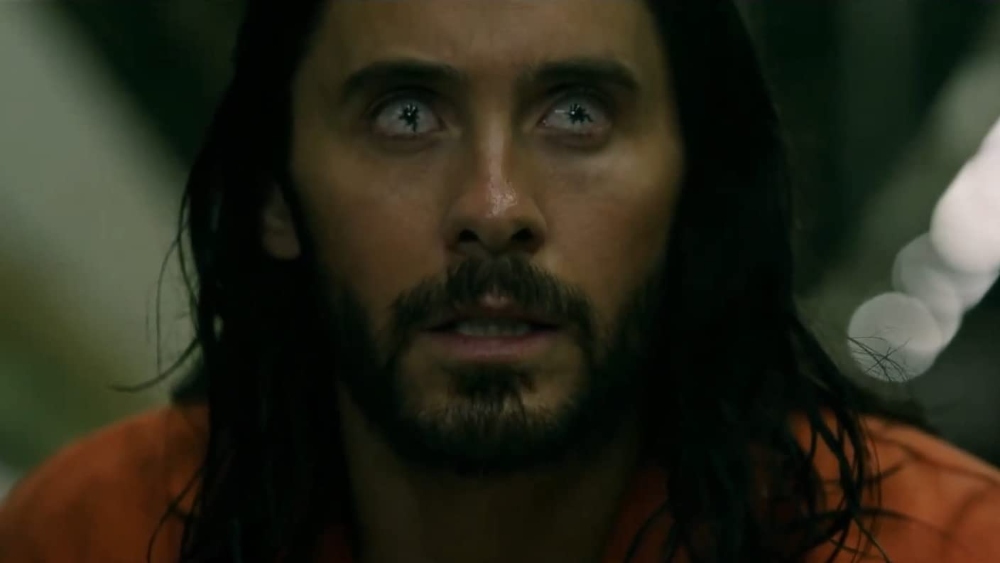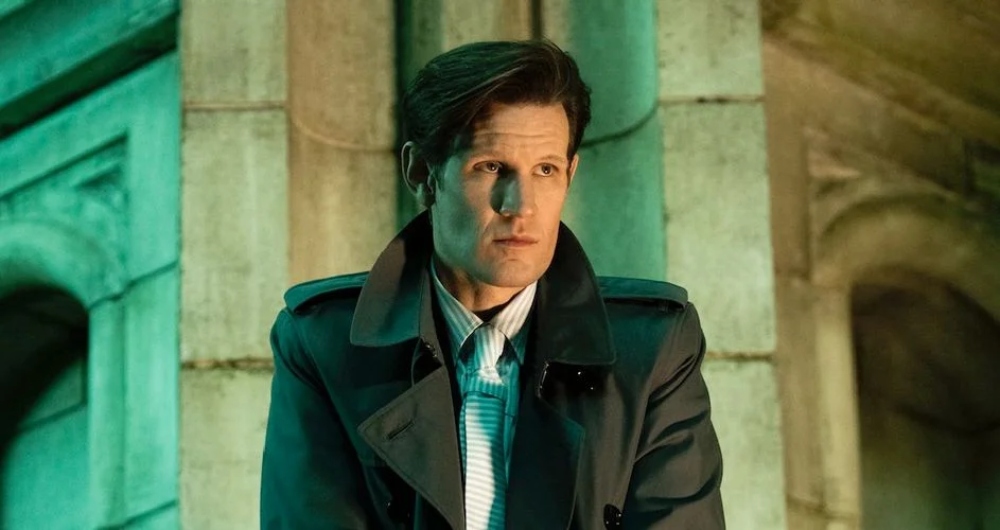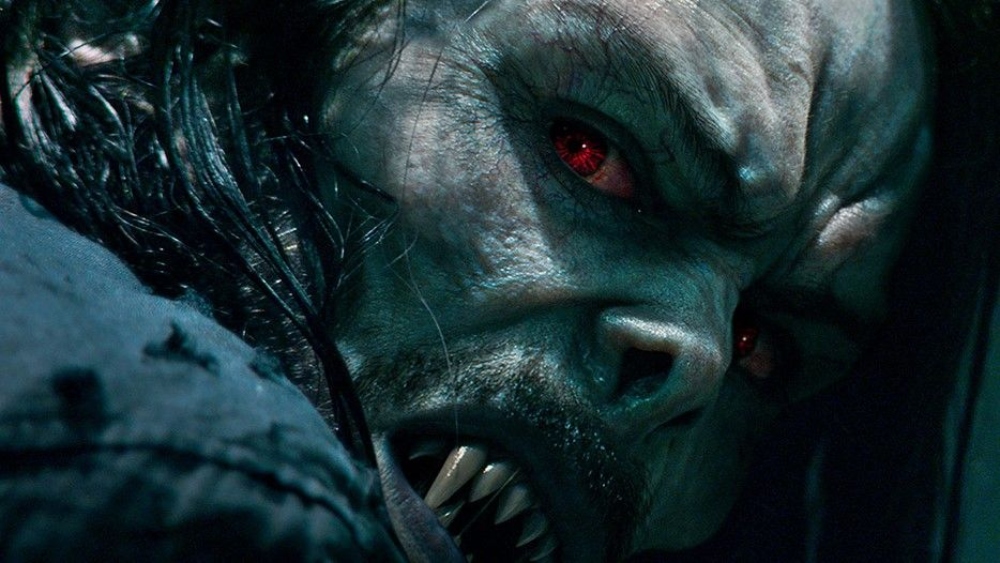
After nearly two years of pandemic-related delays, Morbius finally hits theaters on Friday, arriving on April 1 like some kind of really expensive April Fools’ joke. The film stars Jared Leto as the titular living vampire and the latest anti-hero to emerge from Sony’s Spider-Man universe with his own movie following Venom.
Since this is an origin film, naturally, it begins with the traumatic childhood of young Michael Morbius, who resides in a hospital for kids suffering from a rare and incurable blood disease. He instantly becomes best friends with Milo, who’s played as an adult by Matt Smith, and they bond over their shared tribulations. Several decades later, Michael is now a doctor in New York City, where he works alongside the smart and sexy scientist Martine Bancroft (Adria Arjona) to find a cure for his blood disease and hopefully thereby find redemption.
Dr. Morbius theorizes that vampire cells can solve his and Milo’s condition, but after an experiment goes predictably awry, he instead becomes a vampire-like creature, thirsty for blood, able to hear minuscule sounds, dodge bullets, bust through iron walls, and trapeze through the air like a bat. Considering that he is a bat, one could argue that Morbius is Marvel’s answer to DC’s Batman, but the stakes are both higher, in that Morbius is a supernatural creature, and lower, in that it’s Marvel, so bad things rarely happen to heroes. But once Milo injects himself with the same vampiric serum that gave Morbius his powers, he becomes a “bad” version of his friend and the two of them quickly become foes, facing off over and over, etc.

And that’s the problem with a lot of these comic book movies — you know the protagonist is never in real danger because corporate greed overrides the potential finality of a superhero story, which subsequently often suffers from a lack of consequences as a result. That result is bad enough on its own, but when it gets imported into movies that focus on villains, excuse me, anti-heroes, it makes the story nearly unbearable. Venom, for example, is supposed to be a bad, unlikeable guy, but in Sony’s Marvel universe, he’s a funny jokester played with wink-wink malevolence by human host Tom Hardy.
This Morbius, too, is a good, decent guy. When he realizes the danger behind his powers, he sets out to destroy himself. To give the film a sense of purpose, screenwriters Matt Sazama and Burk Sharpless (vampire world veterans who wrote Dracula Untold and The Last Witch Hunter) create Milo, the truly evil version of Morbius. That character didn’t quite exist in the comics, but he’s here so that the bad guy-turned-good can vanquish someone and there can be a real villain. This remarkable trend of removing all possible stakes from every new movie accelerated to a stunning degree when all the Spider-Man villains were rehabilitated in No Way Home, and that strategy eventually makes a ghoulish appearance in this film as well.
From a technical perspective, Morbius director Daniel Espinosa does a decent enough job with this problematic script, leveraging Leto’s undeniable talent and solid below-the-line craft. Most of the credit would go to a makeup artist, who in the first third of the film makes Leto look miserably gaunt, with a disturbing pallor that contrasts well with the rejuvenated version of the character (in a sequence that is riffed straight out of Steve Rogers’ first transformation in Captain America). That is, until one realizes that even that transformation is likely just the product of Matthew Butler’s all-encompassing visual effects and that Sony does not even officially credit a single makeup artist for the film. But Butler goes too far, even for a Marvel movie, making the key action sequences impossibly disorienting and confusing — quite like a Moebius strip. Each character is surrounded by a gas-like aura, giving the sense that they’re moving faster than light or sound, but key battles are physically impossible for the human eye to follow, and even Oscar winner Pietro Scalia’s best editing tricks can fix this problem.

Then again, what more can one expect from a script that is fundamentally disinterested in telling a cohesive story, that simply wants to lay down markers, explain the character to you, and get to the end credits so it can dazzle you with teasers for the next chapter in this sad, sorry saga. Meanwhile, this first film whiffs on the relationship between Michael and Milo, who are supposed to be best friends, though the contours of their relationship are poorly defined. Is Milo jealous of Michael, or is it the other way around, and if they’re so close and so similar to each other, why does Milo decide to use his powers for evil? I just wanted a little bit more character motivation, because that relationship gets lost in a blur of visual effects, and even those are ineffective.
Sony — in association with Marvel — seems to be setting up The Sinister Six, which is a group of Spider-Man villains. Of course, whether these villains are actually used as such remains a question, as just like The Suicide Squad, they could easily be presented as misunderstood heroes. In any event, Morbius feels like a sacrificial lamb — a jagged piece of the puzzle Sony has been building to capitalize on the success of its Spider-Man franchise, but a piece that, nonetheless, remains puzzling.
Grade: C-
Morbius opens in theaters nationwide on Friday, April 1.





